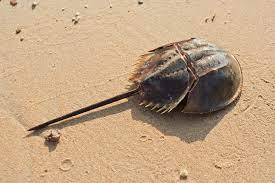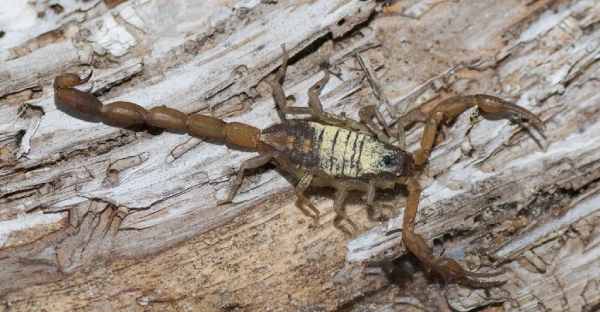Have you ever wondered what it would be like to have more than two eyes? Well, some animals don’t have to imagine, as they are born with three, four, or even 100 eyes. These creatures come in all shapes and sizes, from tiny insects to large aquatic animals. And while it may seem odd to us, these extra eyes can be incredibly useful for these animals when it comes to survival.
Table of Contents
For example, spiders with eight eyes can see in almost all directions, making them adept at finding prey and avoiding danger. And the Nautilus, a deep-sea creature with up to 100 eyes, can detect even the faintest of light in an otherwise pitch-black environment. So, although it may seem strange to us, having more than two eyes can be a game-changer for these animals.
ANIMALS WITH MORE THAN 2 EYES
1. FOUR-EYED FISH

Scientific Name: Anableps.
Have you ever heard of the four-eyed fish? Despite their name, they don’t actually have four eyes – they have just two, divided into two parts. But what makes them unique is the location of their eyes on the top and bottom of their head, which allows them to simultaneously see both above and below the water’s surface. This trait helps them spot potential predators or prey, giving four-eyed fish a significant advantage in their tropical freshwater habitats.
These fish can be found in Central and South America and can grow up to 18 inches long. Additionally, their eyes have a specialized lens that helps them focus on objects both near and far away. With their exceptional visual abilities, four-eyed fish are one of nature’s fascinating creatures.
2. SPIDERS

Scientific Name: Araneae.
Spiders are fascinating creatures with a variety of interesting adaptations. One such adaptation is their impressive number of eyes. Did you know that there are more than 38,000 known species of spiders today? And while most have eight eyes, some species have as many as 12, while others have only six!
Why so many eyes? Spiders use their extra eyes to improve their vision and help them spot predators or prey. Most spiders have four pairs of eyes, arranged in two rows of two. However, some species – like the jumping spider – have three rows of eyes, with two eyes in the middle row.
3. IGUANA

Scientific Name: Iguana.
The iguana may seem like a run-of-the-mill herbivorous lizard, but it actually has a unique attribute: a third eye. Located on top of its head, this parietal eye may not be easily seen, but it serves a crucial purpose. With its light and movement sensitivities, the third eye allows an iguana to detect predators from above and react accordingly.
While these reptiles are native to Central and South America, Mexico, the Caribbean, and Southern Brazil, they have also become a common, albeit invasive species in Florida. Despite their invasive nature, there is no denying the fascinating resilience and adaptation that has allowed the iguana to carve a niche in its new environment.
4. PRAYING MANTIS

Scientific Name: Mantodea.
The praying mantis possesses a total of five eyes – a pair of sizable ones positioned at the forefront of its head, and an additional trio of smaller ones situated on its upper side. It’s intriguing to note that these three smaller eyes don’t actually contribute to the mantis’s visual capabilities. Instead, they serve the purpose of enabling the mantis to detect alterations in light, a crucial ability for activities like concealment and hunting.
On the other hand, the two prominent eyes located at the front of the mantis’s head grant it exceptionally keen eyesight, affording the ability to spot potential prey even from a considerable distance. Despite this impressive visual acuity, these eyes lack the ability to perceive colors, and the mantis primarily relies on its sense of sight for its hunting endeavors.
5. CHITON

Scientific Name: Polyplacophora.
The chiton, a mollusk indigenous to the waters surrounding Australia, is a diminutive organism, with a mere few centimeters in length. Impressively, the chiton possesses an excess of 1000 minuscule eyes, positioning it as one of the most visually perceptive beings on the planet. These eyes serve the purpose of sensing motion within the water, playing a vital role in the creature’s ability to elude predators.
Another notable characteristic of the chiton is its shell, constructed from eight distinct plates. These plates are organized in a pattern of concentric rings, and each plate is adorned with its own array of minuscule eyes.
6. BEES

Scientific Name: Anthophila.
Bees possess a total of five eyes – a pair of substantial compound eyes and an additional trio of minute ocelli eyes located at the center of their heads. These distinct eye types serve specific functions: the larger compound eyes are employed for detecting motion, while the ocelli eyes aid in flight orientation.
All three categories of eyes share the role of light perception, but each kind of eye has evolved to fulfill a distinct role. The compound eyes are composed of numerous tiny hexagonal lenses, each directing light onto a unique section of the eye. This intricate design enables bees to achieve a panoramic field of vision, observing their surroundings from all angles simultaneously. Remarkably, bees are capable of perceiving ultraviolet light, a trait that assists them in locating flowers.
7. TUATARA

Scientific Name: Sphenodon.
The tuatara, a reptile native to New Zealand, stands as the solitary surviving representative of its taxonomic group, a lineage that traces back to the era of dinosaurs. An intriguing aspect of the tuatara is the presence of a third eye positioned atop its head, thought to play a role in temperature regulation.
In the realm of reptiles, which are generally ectothermic creatures, depending on external heat sources to control their internal temperatures, the tuatara stands apart. It possesses the extraordinary ability to generate its own body heat, setting it apart from its reptilian counterparts. This capability is likely a result of its heightened metabolic rate, necessary to sustain not only its regular two eyes but also the additional load of its three-eye arrangement.
8. STARFISH

Scientific Name: Asteroidea.
Referred to as the sea star, the starfish possesses a set of five eyes situated at the extremities of its arms. These eyes exhibit remarkable sensitivity, capable of discerning the faintest of motions.
Employing its eyes as aids, the starfish navigates its environment to locate sustenance and evade potential threats. Despite their small size, the starfish’s eyes play a pivotal role in ensuring its continued existence.
9. THE HORSESHOE CRAB

Scientific Name: Limulidae.
Horseshoe crabs, despite their name, aren’t true crabs; rather, they share a closer evolutionary connection with spiders and scorpions. These peculiar beings possess a total of ten eyes, which might appear substantial, yet their visual acuity is notably limited.
Among their eyes, a prominent central eye serves the purpose of detecting light, whereas the smaller eyes are attuned to identifying movement. Nonetheless, the most intriguing aspect of horseshoe crab eyes lies in their capacity to alter color.
When these crabs are concealed within the sand, their eyes adopt a reddish hue, enhancing their ability to perceive their surroundings. In contrast, when they emerge above ground, their eyes shift to a blue shade, facilitating the recognition of potential predators.
10. SCORPIONS

Scientific Name: Scorpiones.
Scorpions, enigmatic beings that have captivated human curiosity for ages, possess an array of captivating characteristics. Among the most captivating attributes of these octopedal predators is their distinct eyesight. Typically, scorpions boast four sets of eyes, arranged in dual rows of two.
Yet, in certain scorpion species, an additional set of eyes graces their anatomy, elevating the total count to twelve. This supplementary set of eyes rests atop the scorpion’s head and is postulated to serve in detecting motion from overhead. Regrettably, scorpions do not excel in visual acuity, and these supplementary eyes are presumed to function more as motion sensors than for visual perception.
11. BOX JELLY FISH

Scientific Name: Chironex fleckeri.
Box jellyfish boast a remarkable visual system consisting of an impressive 24 eyes, each uniquely adapted for specific functions. Some eyes are specialized for light detection, while others are finely tuned to spot potential threats or prey. This intricate arrangement provides the jellyfish with the ability to perceive its surroundings from multiple angles simultaneously, a substantial advantage in aquatic environments.
Moreover, box jellyfish exhibit the ability to alter the color of their eyes in response to varying light conditions. This adaptive trait aids them in blending seamlessly with their surroundings, offering them a protective camouflage against potential predators.
Despite their remarkable visual capabilities, box jellyfish are regarded with fear in oceanic realms. Their venom possesses formidable potency, capable of fatally affecting a human within mere minutes.
12. LAMPREY

Scientific Name: Petromyzontiformes.
The lamprey, a jawless fish renowned for its mouth resembling a sucker, employed for attaching to other fish and feeding on their blood, harbors a lesser-known feature: it possesses a total of four eyes.
Of these eyes, two grace the upper part of its head, while the remaining two are positioned on the underside. The upper eyes fulfill the role of light detection, while the lower eyes are adept at perceiving motion. This distinctive arrangement confers the lamprey with the ability to simultaneously observe both the aquatic world above and below.
Furthermore, the lamprey’s eyes exhibit remarkable sensitivity to light, endowing it with the capacity to forage for sustenance even in dimly lit waters. Owing to this quartet of eyes, the lamprey attains the ability to maintain clear vision across a spectrum of diverse environments.
FAQs
Which animal has more than 2 eyes?
Numerous animals exhibit more than two eyes, showcasing diverse visual adaptations. Jumping spiders wield up to eight eyes, while scorpions can possess four to twelve eyes. Horseshoe crabs utilize ten eyes for navigation, chitons have over a thousand eyes on their shell plates, and mantis shrimps sport complex visual systems with up to sixteen types of photoreceptor cells.
Box jellyfish feature 24 eyes for various functions. Tuatara reptiles possess a third eye for temperature regulation, while some deep-sea fish develop multiple small eyes to thrive in dim ocean depths.
What animal has 3 eyes?
The tuatara, a reptile native to New Zealand, possesses three eyes. It has two normal eyes like most vertebrates, but it also has a unique “third eye” called the parietal eye located on the top of its head.
What animals have 3 or more eyes?
Several animals feature three or more eyes with distinct roles. The tuatara reptile possesses a “third eye” on its head for light detection and other functions. Certain chitons, marine mollusks, have numerous eyes on their shell plates.
Some deep-sea fish adapt with multiple small eyes to low-light environments. Certain spiders, like jumping spiders, can have up to eight eyes, while mantis shrimp exhibit complex visual systems with numerous photoreceptor types. Specific scorpion species can have several pairs of eyes, and box jellyfish possess 24 eyes for varied purposes.
Final Words
In the vast and diverse world of animals, we can find some unique features that set them apart from one another. One such feature is the number of eyes that they possess. While most animals have two eyes, there are some that have more than that. These animals include the likes of spiders, bees, and butterflies, which have multiple eyes varying in number and arrangement.
These extra eyes allow them to have a wider visual range and a better sense of their surroundings. This unique trait also adds to the mesmerizing nature of these creatures, making them all the more fascinating to study and observe. Though these animals with more than two eyes may be rare, they hold a special place in the animal kingdom.
Reference:
- https://garhwalpost.in/animal-kingdoms-many-eyes
- https://www.forestwildlife.org/animals-with-more-than-two-eyes/

Rahul M Suresh
Visiting the Zoo can be an exciting and educational experience for all involved. As a guide, I have the privilege of helping students and visitors alike to appreciate these animals in their natural habitat as well as introducing them to the various aspects of zoo life. I provide detailed information about the individual animals and their habitats, giving visitors an opportunity to understand each one more fully and appreciate them in a more intimate way.









